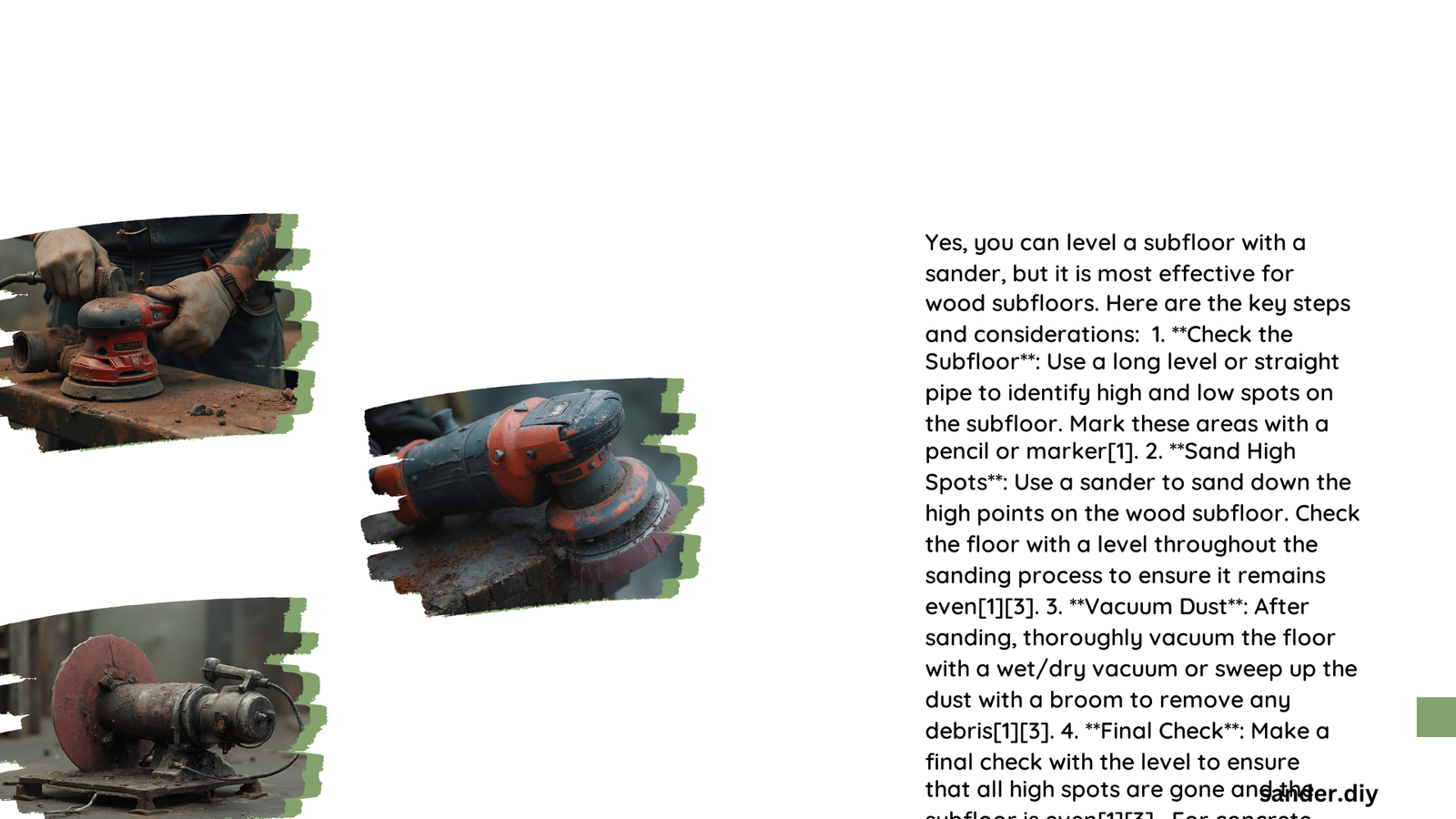Leveling a subfloor requires precision and the right tools. Homeowners and DIY enthusiasts often wonder whether sanders can effectively smooth out uneven wood surfaces. The good news is that with proper techniques, specific sander types, and careful approach, you can successfully level a subfloor, creating a solid foundation for your flooring installation.
Can You Actually Use a Sander to Level a Subfloor?
What Types of Sanders Work Best for Subfloor Leveling?
Professional contractors and experienced DIYers recommend two primary sanders for subfloor leveling:
- Random-Orbit Sander
- Ideal for precise, controlled sanding
- Recommended grit range: 60-80
- Power rating: 3-5 amps
-
Best for smaller, more detailed leveling tasks
-
Belt Sander
- Suitable for larger, more aggressive leveling
- Power rating: 8-10 amps
- Effective for significant surface unevenness
- Requires more skill to prevent over-sanding
What Tools Do You Need for Subfloor Leveling?
| Tool | Purpose | Recommended Specification |
|---|---|---|
| Long Straightedge | Identifying uneven areas | Minimum 6 feet long |
| Spirit Level | Checking surface flatness | Aluminum or professional-grade |
| Measuring Tape | Precise measurements | 25-foot retractable |
| Safety Gear | Personal protection | Dust mask, safety glasses, work gloves |
How to Prepare Your Subfloor for Sanding?
Preliminary Inspection Steps
- Thoroughly clean the subfloor surface
- Remove all debris and loose materials
- Inspect for structural issues or significant damage
- Secure loose boards with screws
- Mark high spots using a straightedge and pencil
What Sanding Techniques Ensure Optimal Results?
Sanding Process Recommendations
- Start with coarse-grit sandpaper (60-80 grit)
- Sand gradually and check progress frequently
- Maintain consistent, even pressure
- Move sander in controlled, overlapping patterns
- Vacuum thoroughly between sanding sessions
What Potential Challenges Might You Encounter?
Common Subfloor Leveling Challenges:
– Excessive material removal
– Creating new uneven surfaces
– Generating significant dust
– Potential wood surface damage
– Time-consuming process
Pro Tips for Successful Subfloor Leveling
- Always wear appropriate safety equipment
- Work in well-ventilated areas
- Use dust collection systems
- Take frequent measurement checks
- Consider professional assistance for complex leveling tasks
When Should You Avoid Sanding?
Do Not Sand If:
– Subfloor has significant structural damage
– Moisture issues are present
– Boards are severely warped
– Professional assessment indicates complex problems
Final Recommendations

While sanders can effectively level subfloors, success depends on careful technique, appropriate tools, and realistic expectations. For minor unevenness, sanders work excellently. However, extensive floor issues might require professional intervention.
Recommended Sanders:
– DeWalt D26451K Random Orbit Sander
– Makita 9403 Belt Sander
